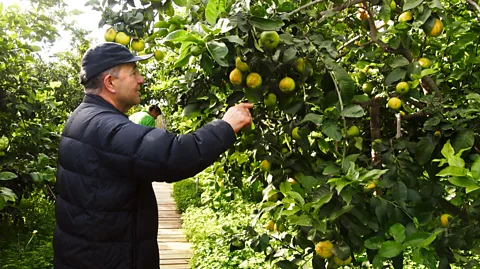The art curator saving the world's rarest fruit
 Lucy Lovell
Lucy LovellFormer Tate Modern director Vicente Todolí founded Todolí Citrus Fundació to preserve rare citrus varieties and compile a catalogue of farming knowledge to inspire future generations.
Our preconceptions of lemons are very rarely challenged. But on a crisp November morning on Spain's leafy Valencian coastline, Vicente Todolí is showing me the secret side of citrus – and it's unlike anything I've seen on supermarket shelves.
The most weird and wonderful specimens are arranged on a table in his Sun-soaked orchard. There's one shaped like an octopus with fat tentacles, a wart-covered citron the size of a newborn baby and a colourful pear-shaped fruit splattered in a tie-dye of green and yellow.
They're not at all what I was expecting, and they're not entirely safe, either. "You will get burned," Todolí warns, pointing at a grass-greenbergamot. The oil is phototoxic, causing the skin to burn if it's exposed to UV light (it isn't dangerous to eat, but it is very acidic). "Want to taste">window._taboola = window._taboola || []; _taboola.push({ mode: 'alternating-thumbnails-a', container: 'taboola-below-article', placement: 'Below Article', target_type: 'mix' });
